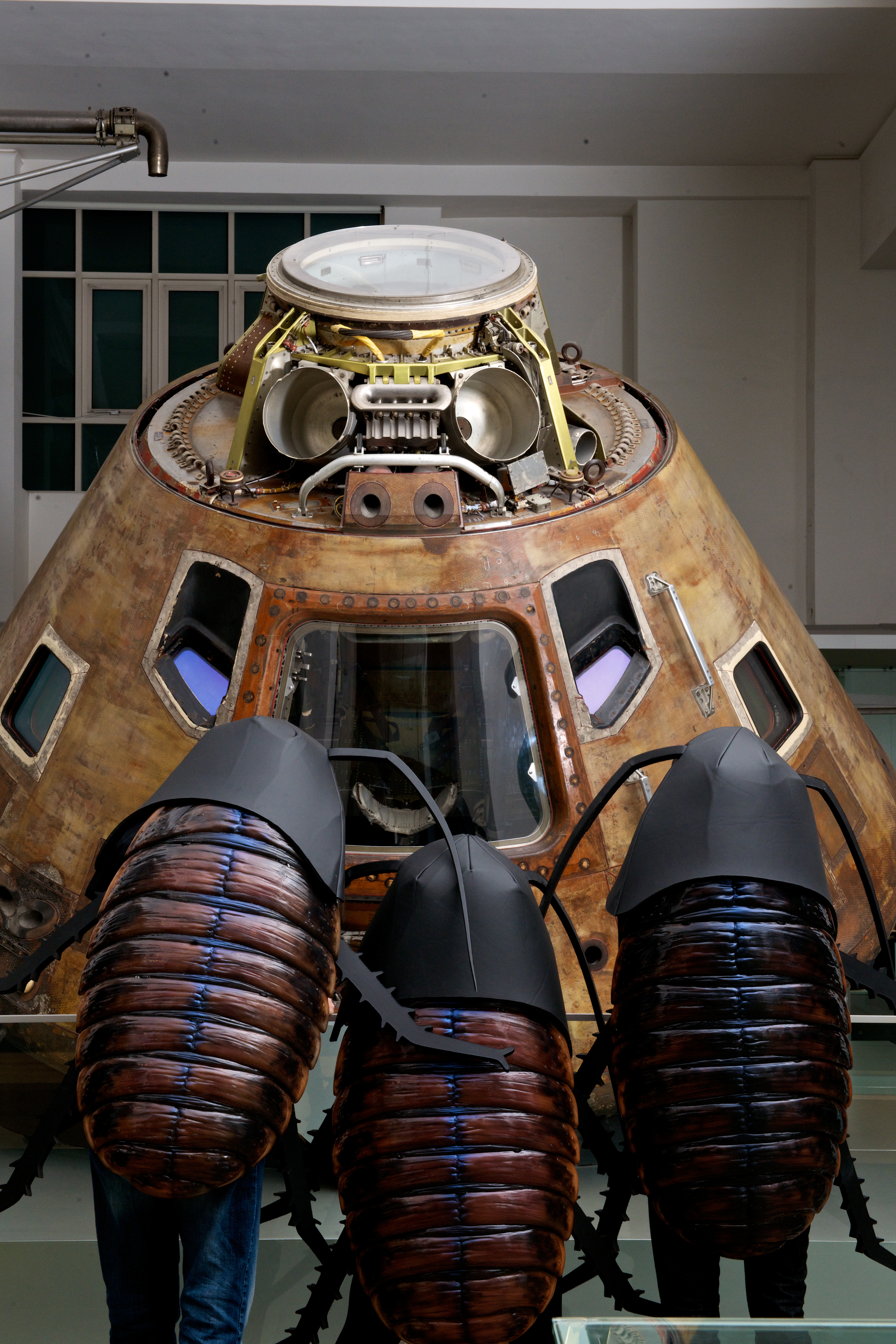How art saves the world
We cannot afford to go on misusing and mistreating our planet. We’re not going to save the world by ‘being green’ every now and then. In order to make a real difference we must fundamentally transformour perspective on our coexistence with the non-human inhabitants of our planet. And artists can help. They challenge our ingrained habits. Yes Naturally makes no distinction between nature and culture, subject and object, man and technology.
Wolves, lilies and talismans
One of the highlights of Yes Naturally can be found in the entrance to the GEM: the Victoria Regia by Keith Edmier. An enormous water lily in which nature and technology are combined: the lily is made from high quality plastics (polyester resin, silicon rubber), but the flowers contain real pollen. It embodies the high-tech wonders and true beauty of nature. Mark Dion’s artwork Mobile Wilderness is a delicate representation of how we humans create an image of nature and try to manipulate it. The wolf is taken out of its natural habitat, put onto a trolley and can then be moved around at will. Mobile Wilderness confronts us with our urge to manipulate and control nature. A large, floating artwork by the Filipino artist-duo Alfredo and Isabel Aquilizan will be placed in the pond of the Gemeentemuseum. The piece consists of thousands of fetishes objects made to protect species and places in nature – animals, trees, rivers. Hundreds of volunteers will make the amulets from waste materials. The first creative workshops to make these Artefacts of Faith have already started.
Outside the museum walls
This expanded art exhibitionis not limited tothe museum walls. On the contrary. Yes Naturally offers a varied programme throughout the city, including urban wildlife safaris, performances, workshops, lectures and debates in art institutes and film houses. It goes without saying that Yes Naturally is firmly nestled in all kinds of social media and online forums.
Twittering bulls, spermatozoids and vacuum cleaners
What is natural? And who or what defines it? Do we people decide, or can animals, plants, atmospheres, bacteria and objects also have a say as well? There are more than 7 billion bacteria living in your mouth. Isn’t it about time that we let them speak for themselves? This is exactly what happens in the Flora and Fauna project by artist Sjaak Langenberg and designer Rosé de Beer. They approached sixteen biologists, philosophers and writers and asked them to crawl into the skin of an animal or object. Throughout the two-week project, each participant will post their thoughts on Facebook or Twitter from the perspective of Potter’s bull, a mosquito, spermatozoid, a vacuum cleaner, the rhinovirus and the ancient plant species Leavecannotdie (Blaarkannietdood) . From mid-February, messages from participants including Esther Gerritsen, Gerbrand Bakker, Vincent Bijlo and Ann Meskens will start to claim attention. For instance, as Vrouwkje Tuinman twitters as slug: @fora_and_fauna This morning I laid 500 eggs. Your turn. #agingpopulation?
